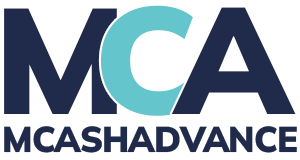
Many business owners assume Merchant Cash Advances (MCAs) are a recent innovation. That’s understandable. Most people first heard of them during the 2008 financial crisis, when they became a fast funding option after banks tightened credit. But MCAs go back further than that, originating in the 1990s and growing quietly until demand exploded.
In this article, we’ll walk through how MCAs were invented, how they grew, and how technology, regulation, and competition shaped the industry you see today. If you’re considering an MCA now, this history will help you understand how the product evolved and why today’s offers are very different from the early days.
What Is the Merchant Cash Advance Industry?
The MCA industry is part of the broader alternative lending market. Unlike traditional loans, MCAs involve selling a portion of your future revenue in exchange for upfront capital. Most agreements are structured as Receivables Purchase Agreements, not loan contracts.
The repayment isn’t made in fixed amounts. Instead, the provider deducts a holdback percentage of your daily or weekly revenue until the advance is repaid in full. This percentage varies based on your sales, giving it a level of flexibility that traditional loans don’t offer.
MCAs are primarily offered by fintech companies and non-bank lenders, many of which specialize in working with small businesses that don’t qualify for bank financing.
Who Invented MCAs?
The concept of the MCA originated in the 1990s. A company called AdvanceMe was one of the first to bring the model to market. They developed a patented system that allowed a credit card processor to split each transaction, sending a portion to the lender and the rest to the merchant. This was known as split-funding, and it became the dominant repayment method for early MCAs.
Back then, MCAs were mainly offered to businesses with steady credit card volume, like restaurants, salons, and retail stores. As long as you had daily swipes, you could qualify.
AdvanceMe’s early legal structure, using receivables instead of interest-based loans, was also what allowed them to operate outside consumer lending laws. Other providers followed their lead, and the MCA market started to take shape.
The Rise of MCA Brokers and ISO Networks
In the early 2000s, the MCA industry expanded rapidly thanks to Independent Sales Organizations (ISOs) and MCA brokers. These intermediaries connected merchants to lenders in exchange for commissions.
The broker model helped MCA providers scale without needing large internal sales teams. However, it also introduced some challenges. Some brokers submitted incomplete or exaggerated applications, while others stacked multiple advances on the same business. These practices would later draw regulatory attention.
Despite the risks, the ISO network was one of the main engines of growth for the industry throughout the 2000s.
The Role of Confession of Judgment (COJ)
To protect themselves from default, some MCA providers began requiring a Confession of Judgment (COJ)—a legal document that lets the provider obtain a court judgment without a trial if the business misses payments.
COJs gave lenders strong enforcement power but were widely criticized for bypassing due process. In many cases, they allowed MCA providers to seize funds or garnish accounts almost immediately.
This aggressive tactic became one of the most controversial aspects of the industry and would later be banned or restricted in several states, including New York.
Impact of the 2008 Financial Crisis
When the 2008 recession hit, banks pulled back on small business lending. That gap gave MCAs a chance to step in. Suddenly, businesses that couldn’t get approved for a line of credit or SBA loan were being funded through advances, often within days.
The recession didn’t just grow the MCA industry. It validated it. What started as a niche tool for card-based businesses became a go-to funding option for many industries.
AdvanceMe, which had funded $9 million in 1999, was funding over $200 million annually by 2006. Other providers followed suit, and new players entered the space.
Evolution of Repayment Methods
Early MCAs relied on credit card processors and split-funding. But as businesses diversified their sales channels, providers adopted new ways to collect repayment.
Today, most MCAs use ACH-based daily or weekly deductions. This allows providers to work with businesses that don’t rely solely on credit cards. It also paved the way for revenue-based financing (RBF), a broader model that still uses projected income as the repayment base.
The result? MCAs became more accessible, and the pool of eligible businesses expanded beyond restaurants and retail.
For a breakdown of how these repayment methods work, see How to Repay an MCA.
Fintech Innovation and Underwriting Advances
Between 2010 and 2015, new fintech providers started to reshape the MCA model. Instead of relying on manual application reviews, they built platforms that used data from:
- Business bank accounts
- Point-of-sale systems
- Accounting tools
- Tax filings
This shift from “swipe volume” to full revenue-based underwriting made approval faster, more accurate, and less biased. It also enabled the rise of embedded MCA offers through platforms like Square and Shopify.
These providers could underwrite advances directly using transaction data they already had access to, streamlining the entire process.
Entry of Major Digital Brands
Around 2020, some of the world’s biggest tech platforms entered the MCA space.
- Amazon launched MCAs for sellers on its marketplace.
- DoorDash began offering advances to restaurant partners.
- Square leveraged its POS system to fund small businesses.
- Shopify launched capital programs for its merchants.
This model is known as embedded lending. It lets these companies fund their own users using the data already inside their ecosystems.
The advantage? Faster underwriting, higher approval rates, and better alignment with the merchant’s actual cash flow. For the platforms, it creates a new revenue stream and builds loyalty by offering capital when it’s needed most.
Industry Regulation and Legal Scrutiny
MCAs have long operated outside traditional lending laws. Because they’re structured as purchases of future receivables—not loans—they’ve avoided oversight by regulators like the CFPB or Federal Reserve.
Instead, MCA contracts are governed by the Uniform Commercial Code (UCC), which applies to business transactions. This gap in oversight allowed some providers to use aggressive tactics and high fees, drawing increasing criticism.
Key regulatory developments include:
- State Laws: New York, California, Utah, and Virginia have all passed laws requiring MCA providers to disclose costs more clearly.
- FTC Action: In 2022, the Federal Trade Commission took action against several MCA companies for deceptive practices.
- COJ Bans: States like New York have restricted or banned the use of COJs.
While MCAs are still legal and widely used, providers now face growing pressure to operate with greater transparency and fairer terms.
Common Industry Practices Under Review
In addition to COJs, two common MCA practices have come under scrutiny:
- Renewals: Some providers encourage early renewals before the original advance is paid off. While this can provide ongoing cash flow, it often resets the repayment term and increases costs.
- Stacking: Some businesses receive multiple MCAs from different providers at once, creating repayment obligations that are hard to manage. This can increase default risk and hurt the borrower.
These practices have led to tighter underwriting standards and more responsible funding policies from top-tier providers.
Public Criticism and Media Coverage
The MCA industry has faced negative coverage from national media and advocacy groups. Stories have highlighted:
- Businesses drained of funds due to aggressive collections
- COJs executed without proper notice
- APR-equivalent rates far higher than traditional loans
This coverage has fueled demand for clearer disclosure laws and industry reform. It’s also pushed providers to adopt more borrower-friendly practices, especially those who want to remain competitive in a more regulated future.
How Big Is the MCA Market?
The MCA market has grown rapidly. What was once a $200 million segment is now projected to reach over $1 trillion globally by 2028, with a compound annual growth rate (CAGR) of 15.5%.
In the U.S. alone, adroitmarketresearch.com estimates the industry will reach $26.3 billion by 2029, growing at over 5% annually.
This growth is driven by:
- Increased demand from small businesses
- Frustration with slow bank lending
- Fintech automation and instant approval processes
- Embedded lending from major platforms
The Future of the MCA Industry
The MCA industry is maturing. As regulation increases and major platforms enter the space, the market is moving toward more transparent, tech-enabled models.
We expect to see:
- Stricter compliance with disclosure laws
- More personalized underwriting
- Lower default rates from better risk models
- Ongoing pressure to reduce fees and improve clarity
MCAs are no longer a fringe product. They’re a core part of how many businesses fund operations, cover gaps, or seize short-term opportunities.
If you’re exploring an MCA today, you’re stepping into a space that’s more sophisticated, more regulated, and more competitive than it was just a few years ago.
Ready to Apply?
or learn more about MCA same day funding

